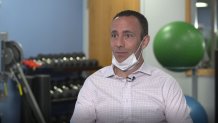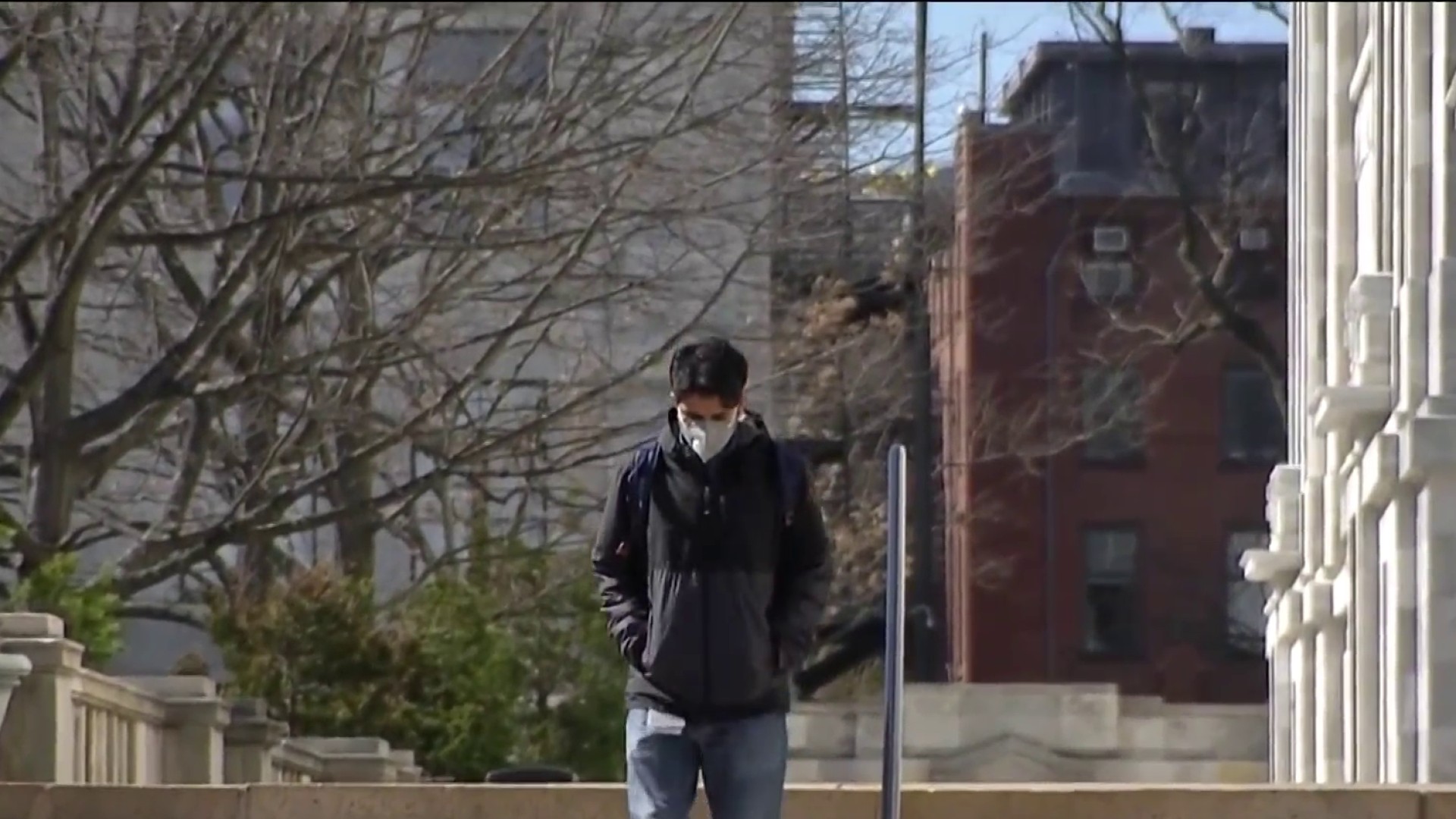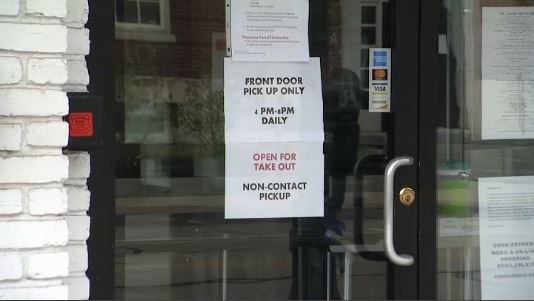While showing me around an empty clinic in Wellesley, Dan Brownridge said there is ample space to follow social distancing guidelines when he welcomes back employees and patients.
Brownridge is owner of Joint Ventures Physical Therapy and Fitness, which has nine locations around the Boston area. All of the clinics have been vacant for weeks.
Even though physical therapy made the state’s list of essential businesses, Brownridge made the difficult decision to close for the protection of patients and staff.

“It’s been exceedingly tough,” he told me. “That was easily one of the worst days of my life, having to make that phone call to lay off almost 100 people we’ve really built a family with.”
When the clinics eventually reopen, Brownridge acknowledges things will look different. It’s likely therapists will wear masks and gloves. There will be frequent disinfecting of exercise equipment and treatment rooms. It’s possible patients will even be asked to take their temperature when they arrive in the waiting room.
As he talks with banks about how to pay the mounting pile of bills and applies for government aid programs, Brownridge said he is also in constant communication with anxious employees. Every day, he fields questions about when the business will reopen.
“The tough part is most of the answers to questions I’m getting [are], ‘I don’t know.’ It’s tough as a business owner to look at your staff and say, ‘I don’t know,’” he said.
Massachusetts business owners are looking to Gov. Charlie Baker for a date to circle on the calendar.
But Baker has repeatedly said the state needs to survive the surge before he lays out what he described at a recent press briefing as the “rules of reopening.”
“We need to be on the other side of the curve before we can do any of this stuff,” Baker said.
Guidelines released by the White House offer a road map for when states can begin to lift their lockdowns. The criteria include a 14-day downward trajectory of COVID-19 cases, hospitals treating all patients without “crisis care” — meaning they aren’t overburdened by a surge of patients — and robust testing and contact tracing strategies in place.
When those boxes are checked, the guidelines recommend the first phase of “opening America.”
During that stage, vulnerable residents would continue sheltering in place and employers would still encourage telework.
But the guidelines say restaurants could start seating customers in the dining room again. Salon owners could provide haircuts. And gyms could let people burn off calories and cabin fever. All these industries would need to follow strict social distancing and sanitation protocols.
David Bramante has experienced plenty of twists and turns during his 42 years of owning the West Newton Cinema. But never a plot quite like this.
“It’s been a roller coaster,” he told me.
When his daughter started a GoFundMe page for the 82-year-old theater, loyal customers responded in a big way. To date, there are more than $40,000 in donations to help pay for operating expenses during the lockdown.
Thankful he’s able to stay afloat for now, Bramante is reinventing his business model. He walked me around an empty theater and talked about some of the changes he plans to implement. They include online purchasing and reserved seating that will position people at least 10 feet apart.
“If one seat is used for a 1 p.m. show, we would sanitize it and it wouldn’t be used again for the following show,” Bramante explained, adding that a 225-person theater would only seat a maximum of about 50 people.
The business owner will solicit customer feedback on the safest way to provide movie staples like soda, candy and popcorn.
When he is allowed to dim the lights and hit the play button again, Bramante hopes that people cooped up for weeks will still seek out the brief escape from reality as they adjust to a new normal.
“To just isolate yourself for a couple of hours and be taken somewhere else with a film is really special,” Bramante said. “If there’s a feeling of security and safety, I think a lot of people would be happy to come in and see a movie.”



